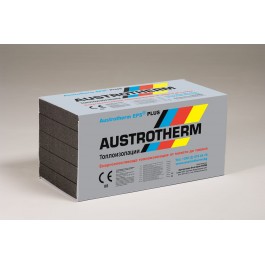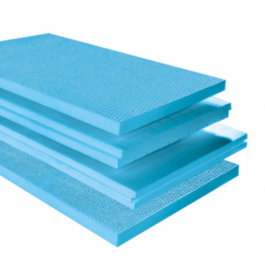EPS and XPS
The first step toward a more ecological way of life is to check the insulation of your home. Whether you're considering investing in solar panels, solar water heating, heat pumps, or other green energy sources for your home, the first thing you should do is improve the insulation of your home. This will ensure the maximum utilization of natural resources and prevent unnecessary energy loss.
If you skip this step, you'll end up spending a lot of money on a powerful energy supply system for a poorly insulated property. Insulation with expanded polystyrene (EPS) is one of the most effective ways to save energy at home, as it keeps the space warm in winter and cool in summer.
At ATEK 1, we'll try to help you understand the importance of insulating your home or office and introduce you to the different options for EPS or extruded polystyrene (XPS) insulation for floors and ceilings. You can choose these options to enhance the protection of your home and make it as energy-efficient as possible.
What Is Façade Insulation for Your Property?
Extruded or expanded polystyrene (EPS) insulation will help you maintain the desired temperature in your home throughout the year, protecting it from cold in winter and excessive heat in summer. A façade constructed from thermal insulation boards is also useful for reducing noise. A well-insulated home or office is highly energy-efficient and requires very little additional heating and cooling.
How much money you'll save by insulating your home depends on various factors such as the type of insulation, whether it's made with 2, 3, 4, 5, 6, 8, or 10 cm EPS, and the size of your property. Additionally, depending on how old your house is, you may need more or fewer insulation measures. The good news is that you usually don't need permission to install insulation, and it will eventually pay off, making it a reasonable investment.
Modern homes are typically built to much higher insulation standards, while older spaces require more work, but with cost-effective EPS insulation, everything is achievable. In the latter case, there are likely many opportunities to improve the energy efficiency of your home. When it's too cold, heat can be lost in all directions, so you need to consider comprehensive insulation to keep your home warm.
You can choose to insulate the roof, floors, walls, windows, and doors with EPS or XPS insulation. The most critical are the walls because in a typical home, around 30 to 40 percent of the heat is lost through the walls. The roof is next, representing about 25 percent of heat loss. Then come the windows and doors with 20 percent, and finally, the floor.
What Is EPS?
Expanded polystyrene (EPS) foam is a type of closed-cell thermal insulation produced by "expanding" polystyrene polymer; its typical appearance is as white foam insulation material (similar to packaging foam). This type of rigid foam insulation is also known as expanded polystyrene.
What Is XPS?
Extruded polystyrene (XPS) foam is a rigid insulation that is also formed from polystyrene polymer but manufactured by extrusion and often has a distinct color for brand identification. The other name you may encounter for this façade insulation is extruded polystyrene or XPS.
What Is the Difference Between EPS and XPS?
Floor and ceiling insulation is a critical component that must be specified when designing a functional, cost-effective, and energy-efficient building. One method for insulating a building is by installing various thicknesses of EPS, ranging from 2 cm to 100 mm, depending on the condition of the specific property.
Two of the most commonly installed types of rigid foam insulation are expanded and extruded polystyrene (EPS and XPS). Both serve the same primary function: providing a means to control heat transfer within the building system. However, they differ in significant ways.
The primary responsibility of any rigid insulation building material is to offer positive thermal characteristics. But this is not the only factor to consider when choosing foam insulation. It's also essential to understand how it will perform in several situations.
Fibran is produced in a continuous extrusion process that produces a closed-cell foam insulation. EPS/styrofoam, on the other hand, is made by expanding spherical beads into a mold and then fusing them with heat and pressure to create beads.
Each product has advocates who claim one is superior to the other. However, it's important to understand that each product may be more suitable for a specific application than the other. This may become clearer by examining the thermal and moisture protection, fire and water resistance, and the implications for sustainable building design.
Fibran, with approximately R-5 at 25 mm, has only slightly better thermal characteristics than EPS. The thermal characteristics of styrofoam and fibran at the same density are quite close. However, EPS with the same density is more cost-effective.
Advantages
- Insulating Properties
With today's focus on design sustainability and energy efficiency, the proper use of insulation is becoming more important than ever. There are many different ways to insulate a building, and dozens of insulation options exist. A good choice for such a step is EPS and XPS insulation, which offers undeniable protective and insulating properties while being available at a budget-friendly price.
- No Mold or Mildew Growth
Moisture promotes the formation of mold, mildew, dust mites, and other biological air pollutants that can cause allergies, asthma, or other health issues. Expanded and extruded polystyrene are moisture-resistant; however, XPS for facade insulation is more commonly used for hydroinsulation and roofing systems with a lower grade, where insulation is placed on the roofing membrane.
- Stable and Long-Term Foundation
The different classifications are directly related to the physical characteristics of each type, primarily high density, pressure resistance, and the size of the styrofoam. The range of density and pressure strength allows for specific use in various parts of the building. These types of insulation will provide long-term value to your building compared to most competitors on the market.
- Suitable Insulation for Unseen Parts of the Property
Don't forget the surfaces that are not visible. Insulation systems of EPS and XPS can be used for foundation walls and floor slabs to provide significant energy savings. Uninsulated concrete provides a pathway for heat and moisture to transfer between the heated interior of the building and the cooler ground surrounding the building or through exposed edges of the slabs to the external air.
- Recyclability of Insulation Panels
Gain points for using energy-efficient products like EPS and XPS during the construction of a new building or the renovation of an existing building. This insulation foam not only impresses with its good price but also with its fully recyclable material.
Products and Sizes of Styrofoam and Fibran
In our online store and building material warehouses, ATEK 1, you can find various types of styrofoam and fibran sizes, including EPS and XPS panels. We work with proven quality brands like Austrotherm and Fibrostir.
Thermal insulation board made of expanded polystyrene Austrotherm
This type of thermal insulation boards is extremely suitable for insulation in places with low loads, such as roofs, filling wall niches, interior insulation with EPS styrofoam, and more. The material provides continuous air circulation, insulation, and stability. It is available in various sizes ranging from 2 to 10 cm at an affordable price. For more details, see the individual product descriptions and their sizes:
- 1000 x 500 x 20 mm (2 cm)
- 1000 x 500 x 30 mm (3 cm)
- 1000 x 500 x 40 mm (4 cm)
- 1000 x 500 x 50 mm (5 cm)
- 1000 x 500 x 60 mm (6 cm)
- 1000 x 500 x 80 mm (8 cm)
- 1000 x 500 x 100 mm (10 cm)
Fibrostir Boards made of Extruded Polystyrene
Thermal insulation boards from the Fibrostir brand are known for their strength, resistance, low thermal conductivity, moisture resistance, and long operational life. They can be installed equally well with cement, plaster, lime, anhydride, and sand. For this type of interior or exterior insulation with fibran, we offer a wide range of sizes - 1, 2, 3, 4, 5, 6, 8, and 10 cm. Explore all types in detail in our online store.
- 1250/600/10 mm (1 cm)
- 1250/600/20 mm (2 cm)
- 1250/600/30 mm (3 cm)
- 1250/600/40 mm (4 cm)
- 1250/600/50 mm (5 cm)
- 1250/600/60 mm (6 cm)
- 1250/600/80 mm (8 cm)
- 1250/600/100 mm (10 cm)
- 2500/600/30 mm (3 cm)
- 2500/600/40 mm (4 cm)
- 2500/600/50 mm (5 cm)
Take care not only of the facade insulation of your building but also of the unseen parts that are equally responsible for the energy efficiency of the property. Contact us for consultation and the selection of high-quality thermal insulation panels.


